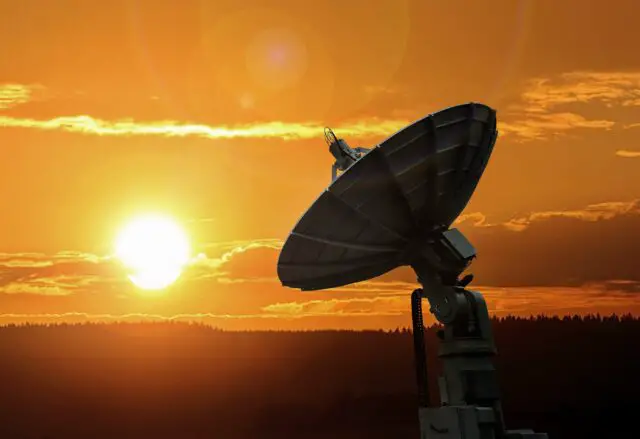
For millions of Indians, especially those in remote and underserved regions, reliable internet access remains a distant dream. But a new frontier is opening up, promising to bridge this digital divide: satellite internet. With advancements in satellite technology and increasing investment in the sector, could this be the game-changer India has been waiting for?
In today’s rapidly evolving world, internet connectivity is no longer a luxury but a necessity. It fuels economies, empowers education, transforms healthcare, and facilitates access to crucial information. While India has made significant strides in expanding its internet infrastructure, a substantial portion of the population, particularly in rural and geographically challenging areas, still lacks access to consistent and high-speed internet.
Traditional ground-based infrastructure, relying on towers, fiber optic cables, and antennas, faces limitations in reaching these remote locations. The cost and logistical hurdles of deploying and maintaining such infrastructure in sparsely populated or difficult terrains can be prohibitive. This is where satellite internet emerges as a promising alternative.
A New Era of Connectivity
Satellite internet utilizes constellations of satellites orbiting the Earth to transmit and receive data. Unlike traditional geostationary satellites that are positioned at a very high altitude, newer systems like Starlink employ Low Earth Orbit (LEO) satellites. These LEO satellites orbit closer to the Earth, resulting in lower latency and faster speeds, making the internet experience comparable to terrestrial broadband.
Several players are now eyeing the Indian market, recognizing the immense potential for growth. Elon Musk’s Starlink is on the verge of launching its services in India, having partnered with major players like Jio and Airtel for equipment distribution. This collaboration suggests that regulatory approval from the Indian government might be imminent. Starlink currently operates in 125 countries with over 7 million users globally and aims to add at least a million new users annually, a target that could receive a significant boost from the Indian market.
However, Starlink will not be alone in this race. Chinese satellite internet companies like SpaceSail are also preparing to enter the Indian market, potentially creating healthy competition. Additionally, local providers like Airtel and Jio, along with Amazon’s Kuiper project, are also expected to vie for a share of this burgeoning market. The telecom regulator is in the final stages of allocating spectrum for satellite services, indicating that the stage is set for a multi-player battle in the Indian satellite internet arena.
Beyond Urban Centers: Transforming Rural India
The impact of satellite internet could be particularly transformative for rural India. Imagine students in remote villages accessing online education resources and interacting with teachers virtually. Picture healthcare centers in underserved areas connecting with specialists in urban hospitals for real-time consultations. Consider farmers gaining access to precision agriculture techniques and weather updates to optimize their yields.
Satellite internet can make these scenarios a reality. By providing reliable connectivity to even the most isolated locations, it can empower communities and unlock unprecedented opportunities for socio-economic development. This technology has the potential to revolutionize various sectors:
- Education: Bridging the educational gap by enabling interactive and immersive learning experiences in remote areas.
- Healthcare: Facilitating telemedicine and remote diagnostics, connecting rural patients with doctors and specialists.
- Agriculture: Enabling precision agriculture, providing farmers with access to vital information and tools for improved productivity and sustainability.
- Financial Services: Driving the adoption of digital banking and fintech solutions in rural areas, promoting financial inclusion.
- Disaster Management: Providing a critical lifeline for communication and coordination during emergencies, ensuring timely responses and saving lives.
Challenges and the Path Ahead
Despite the immense potential, the widespread adoption of satellite internet in India is not without its challenges. Cost remains a significant factor. While satellite internet costs have come down in recent years, it is still generally more expensive than traditional broadband services. Affordability will be crucial for reaching the masses, especially in rural India where income levels are lower.
Another challenge lies in ensuring digital literacy and creating relevant local content. Simply providing connectivity is not enough; people need to be able to use the internet effectively and find value in it. Efforts to promote digital literacy and develop content that caters to the specific needs and languages of rural communities will be essential.
Furthermore, regulatory hurdles and spectrum allocation will play a critical role in shaping the future of satellite internet in India. Clear and supportive government policies will be necessary to facilitate the deployment of infrastructure and encourage competition in the sector.
A Connected Future for All?
Satellite internet presents a compelling opportunity to finally bridge India’s digital divide and bring the benefits of the internet to all its citizens. While challenges remain, the technological advancements and the increasing interest from both domestic and international players suggest a promising future. As India stands on the cusp of this new era of connectivity, the potential for transforming lives and driving socio-economic progress is immense. The ability to connect the unconnected could unlock a new wave of growth and development, ensuring that no one is left behind in the digital age.


















